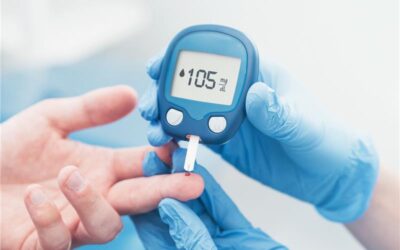CASE STUDY | VIDEO
Ketogenic Efficacy Through Microbiome Metabolism
We are pleased to present the second in our series of case studies showing how metabolomics can help you unlock your biomarker discovery program.
In today’s example, our client leveraged metabolomics insights to learn how the low-carb, high-fat ketogenic diet can help some patients with treatment-resistant epilepsy control their seizures. This provides a potential new target for therapies for these patients.
Video Transcript
Epilepsy affects about 1% of the human population. For most epileptic patients, the first line in therapy, that is anti-convulsant drugs, tend to be effective. For those patients that are refractive to this type of therapy, there are limited options. The problem with anti-convulsants is they don’t really get to the underlying pathophysiology of epilepsy. They work more on the seizure symptoms but don’t really improve the GABA-glutamate ratio in the hippocampus that we want to see from an effective therapy for epilepsy.
One therapy that has been proven effective for about a hundred years is the ketogenic diet. This is a high fat, high protein, low carbohydrate diet that is effective at managing a number of neurological diseases including epilepsy. How this diet imparts its therapeutic activity is really unknown. A group at UCLA hypothesized that the gut microbiome potentiated a lot of the effects of the ketogenic diet and provided seizure protection in epilepsy.
To test this hypothesis, they developed a series of mouse models where they could test how the ketogenic diet imparts its effects through the gut microbiome. Only mice with an intact microbiome, those that were either not germ free or didn’t have their microbiomes knocked out by broad spectrum antibiotics, showed this protective effect of the ketogenic diet. This proved that the gut microbiome is responsible.
They did some really fascinating work with metagenomics to identify which microbes seem to be most responsible for the effect. A species of akkermansia and peribacteritis seem to be the most effective at potentiating this protective effect of the ketogenic diet. These bacteria alone were sufficient at imparting this protective effect.
That really doesn’t tell you the actual mechanism of how the diet works. It also poses problems for translating such a probiotic-type therapy to humans because you essentially must reinvent the wheel and discover which microbes and humans are imparting a similar effect. To really get at the mechanism, the researchers turned to global metabolomics. What they found were that an entire class of metabolites, called gamma-glutamyl amino acids, were significantly reduced both in stool and in circulation for these mice that were essentially protected from seizures- those that were receiving the ketogenic diet or that received the probiotic and the ketogenic diet. Those treated, either with a controlled diet or antibiotic knocked out microbiomes with the ketogenic diet, still had high levels of these gamma-glutamyl amino acids.
What’s really interesting is that the effective therapy, our ketogenic diet and our ketogenic diet plus the probiotics, managed to increase the brain GABA-glutamate ratios. This is really getting to alleviating the pathogenesity of epilepsy and really trying to get an actual mechanism of how to alleviate not just the symptoms but the disease itself.
Thinking about the metabolomics data, if I’m going to try to reduce all of my gamma-glutamyl amino acids, one way I can do that in the absence of a diet or in the absence of a probiotic approach, is to inhibit the rate limiting step in gamma-glutamyl amino acid formation. The enzyme gamma-glutamyl transpeptidase or GGT catalyzes this rate limiting step. There are inhibitors off the shelf that you can use to demonstrate that blockingGGT in effect would increase seizures and that’s exactly what these researchers did. They took a gamma glutamyl transpeptidase inhibitor called GGA Top and they applied it to these mice and the apps in the ketogenic diet. That’s really important that this was done with the control diet. This inhibitor on its own managed to significantly increase the threshold for seizures, essentially imparting the seizure protection in the absence of the diet. Bypassing a lot of what the microbiome is doing and essentially reducing our gamma glutamyl amino acid levels in circulation.
This really gives us a number of paths forward that metabolomics was able to reveal. First, it commented on a specific mechanism of how the ketogenic diet works through the gut microbiome. It works by reducing levels of gamma-glutamyl amino acids which in effect increases our gamma or GABA to glutamate ratios in the hippocampus and really getting to the underlying problems with the disease. Second, it revealed an actual drug target where we can inhibit gamma-glutamyl transferase and you know in the future maybe inhibit specific gut microbiome-derived gamma-glutamyl transferases and then thus not affecting the host. A real path forward for discovery and drug development and coming up with a brand-new strategy for tackling seizures and epilepsy in humans. The fact that gamma glutamyl transferase levels have actually been shown to be lower levels higher in patients who have epilepsy you know this actually could be a translatable marker a set of biomarkers as well as mechanism for inhibition to really start taking this into the clinic in humans. Metabolomics gave us the mechanism and our target for drug development.






